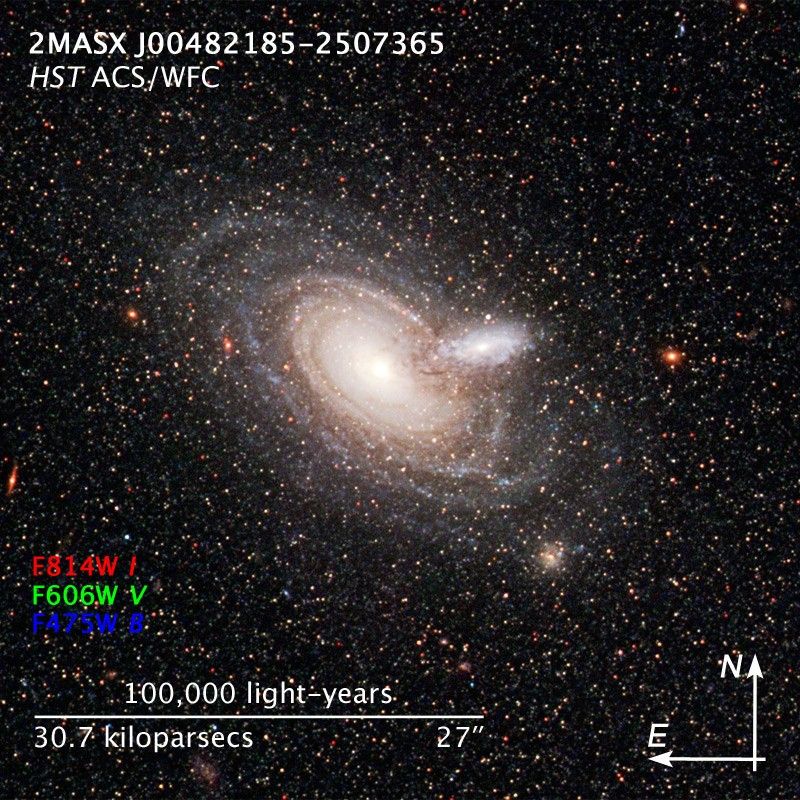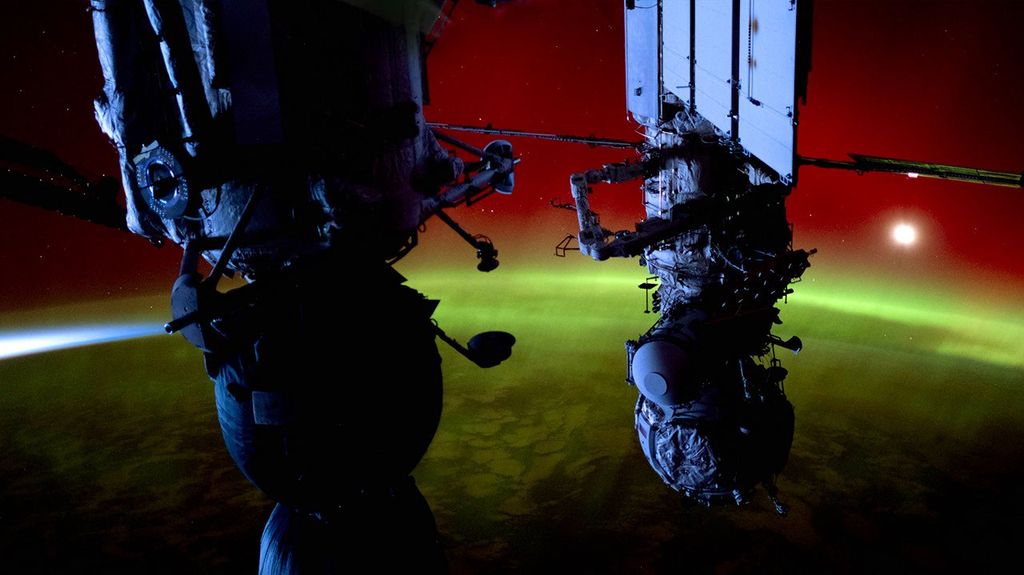1 min read
Compass and Scale Image for Overlapping Galaxies 2MASX J00482185-2507365

About the Object
- R.A. PositionR.A. PositionRight ascension – analogous to longitude – is one component of an object's position.00h 25m 29.79s
- Dec. PositionDec. PositionDeclination – analogous to latitude – is one component of an object's position.-12° 22' 46.98"
- ConstellationConstellationOne of 88 recognized regions of the celestial sphere in which the object appears.Sculptor
- DistanceDistanceThe physical distance from Earth to the astronomical object. Distances within our solar system are usually measured in Astronomical Units (AU). Distances between stars are usually measured in light-years. Interstellar distances can also be measured in parsecs.780 million light-years (240 megaparsecs)
- DimensionsDimensionsThe physical size of the object or the apparent angle it subtends on the sky.This image is roughly 50 arcseconds (180,000 light-years or 56 kiloparsecs) wide.
About the Data
- Data DescriptionData DescriptionProposal: A description of the observations, their scientific justification, and the links to the data available in the science archive.
Science Team: The astronomers who planned the observations and analyzed the data. "PI" refers to the Principal Investigator.HST Proposal: 10915 J. Dalcanton (University of Washington) et al. The science team comprises B. Holwerda and R. de Jong (Space Telescope Science Institute), W. Keel (University of Alabama, Tuscaloosa), and J. Dalcanton and B. Williams (University of Washington). - InstrumentInstrumentThe science instrument used to produce the data.HST>ACS/WFC
- Exposure DatesExposure DatesThe date(s) that the telescope made its observations and the total exposure time.September 19, 2006, Exposure Time: 1.9 hours
- FiltersFiltersThe camera filters that were used in the science observations.F475W (B), F606W (V), and F814W (I)
- Object NameObject NameA name or catalog number that astronomers use to identify an astronomical object.2MASX J00482185-2507365
- Object DescriptionObject DescriptionThe type of astronomical object.Overlapping Galaxies
- Release DateSeptember 16, 2008
- Science ReleaseGalaxy Silhouettes
- Credit

Color Info
Color InfoA brief description of the methods used to convert telescope data into the color image being presented.
The image is a composite of separate exposures made by the ACS instrument on the Hubble Space Telescope. Three filters were used to sample broad wavelength ranges. The color results from assigning different hues (colors) to each monochromatic image. In this case, the assigned colors are: Blue: F475W (B) Green: F606W (V) Red: F814W (I)

Compass and Scale
Compass and ScaleAn astronomical image with a scale that shows how large an object is on the sky, a compass that shows how the object is oriented on the sky, and the filters with which the image was made.
Related Images & Videos

Overlapping Galaxies 2MASX J00482185-2507365
NASA's Hubble Space Telescope has captured a rare alignment between two spiral galaxies. The outer rim of a small, foreground galaxy is silhouetted in front of a larger background galaxy. Skeletal tentacles of dust can be seen extending beyond the small galaxy's disk of...
Share
Details
Last Updated
Aug 17, 2025
Contact
Media
Claire Andreoli
NASA’s Goddard Space Flight Center
Greenbelt, Maryland
claire.andreoli@nasa.gov

























